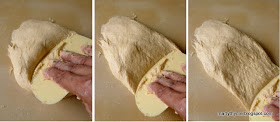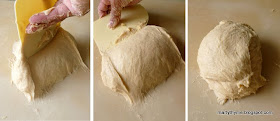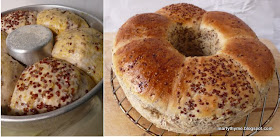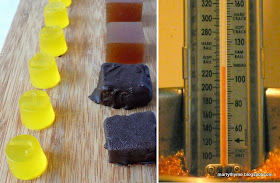| SALAD IN STILL LIFE: FREEDOM OF ASSEMBLY |
The amateur cooks on the show are fantastic. In one challenge, they're given 45 minutes to come up with their own dish, and they do so brilliantly – it would take me that long just to think of what to make. They know how to cook something off the top of their head – I would be frantically looking through recipes for how long to boil an egg!
It pains me to know I could never do what they do and yet I get pleasure out of watching them show me exactly what I am incapable of. Traits of a masochist? Ouch, big time.
Of course, I am not incapable of learning. And there is so much that the show teaches. Gosh, the contestants who stay as long as they can get so much out of being there; the time spent on Masterchef (and that can be up to six months, apparently) is surely as good as being in culinary school.
In one episode, Donna Hay shows her take on Caesar Salad, that dish that every restaurant serves and yet you find unsatisfactory in every one because you probably have your own idea of how it should be made. Well, Donna Hay's salad looked really good on the plate and I had to try it. The components are half a head of baby cos/romaine lettuce, croutons made from thin slices of baguette, a soft-boiled egg, maple syrup-baked bacon and homemade mayonnaise with anchovies.
History tells us that the Caesar was a dish thrown together using whatever was available at the time it was created. Well, that's the way a lot of salads are made, and mine was no different. I used cos, although the one I had was a full-size head, and I made the mayo from scratch, so I got two of the components called for. But I didn't have maple syrup and glazed the bacon with pomegranate molasses instead, I accidentally overcooked the eggs, my croutons were made from soda bread, and I forgot the sprinkling of grated Parmesan. Purists would have had a field day taking every component of this salad apart and criticising it.
But I didn't make it for a purist. I fed myself and I liked the way it tasted. It just shows that if you put enough effort into a dish (and taste as you go along, as the Masterchef contestants are constantly reminded), it will be presentable and not bad to eat, even if you don't follow every single instruction or use only the ingredients called for.
Was it better or could it even compare with anything the Masterchef cooks would have made? I don't know. But I am painfully aware that it's a pleasure not knowing.









